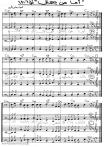Hi Neal , Would explain the II, V I concept in jazz music
Thanks.
Here is part of the explanation, leave a comment if you have some more ideas on it!
The ii V I progression ‘pulls’ your ear towards the next piece. It moves towards ‘resolution’ as we hear it. You may want to try playing the ii V I progression on a piano or guitar to get a better feel for it. Though, almost invariably, you have heard the ii V I progression in music.
If we break the components down, the roman numerals correspond with numbers, but it gives us another set of numbers to use (more options for notation).
If you take a major scale, you can use a number (roman numeral) for each note. And you can build chords and scales starting from each of the seven notes in the major scale.
The progression of ii V I would have chords built on the second note, fifth note, and first note. In C major, that would be D, G, and C respectively.
Those chords only use the notes from the original major scale.
Because of the intervals between the notes in the chords, the movement seems to flow right from ii to V to I, this has to do with the closeness of the notes.
If we look at seventh chords, notes with four chords, here are the notes for the ii V I in C major.
ii: D, F, A, C
V: G, B, D, F
I: C, E, G, B
The C in the ii chord is a half step away from the B in the V chord. The F in the V chord is a half step away from the E in the I chord and the B in the V chord is also a half step away from the C in the one chord. (the other two notes stay the same).
That’s part of the answer at least!




ii-V-I simply spoken is the dominant of dominant towards tonic. See the illustration on this site:
http://youcantrustyourears.com/music-theory/basics/diatonic-harmony/